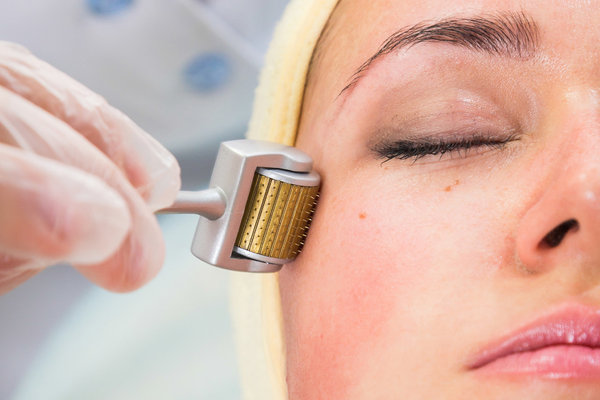At home micro-needling vs clinical

Micro-needling stimulates collagen production, working as an anti-ageing treatment.
As you age, the skin starts to lose its ability to produce collagen and starts to lack elasticity and the ability to regenerate itself. When the skin’s ability to produce collagen decreases, the skin lacks plumpness and bounce. Instead, it starts to look, dry, crepey and saggy. The micro-needling device or derma-roller were designed as a solution to this, to encourage the process of cellular repair. The process helps the skin to stay strong, supple and healthy. In addition, it enables better absorption of topical skincare products.
A micro-needling treatment works by penetrating the skin with very fine needles on a small hand held devise. The skin thereby reacts to these micro-punctures by triggering the skin’s repair response and stimulating growth factors and fibroblasts with the production of collagen.
Pros and cons of micro-needling at home and in clinic
The most obvious benefit to performing the treatment at home is its cost. The treatment is ongoing and so the price of this treatment at a professional clinic can sometimes rack up in comparison to the one-off cost of your own micro-needling devise. Yet, the process isn’t as simple as it sounds…
Longer needles give better results, but as the use of them comes with greater risks, they should ideally be handled by a professional. Aestheticians will usually be fully trained on the treatment and how the sizes of the needles can be used to achieve different results. For example, a 0.25mm may be used to treat one concern, whereas a 0.5mm depth will be better suited for another problem. The nurse should have a greater understanding of how the various depths and needles lengths can be used to target different skincare concerns from pigmentation to acne scarring, whereas, a general at home kit used by a novice will likely not achieve as good of an outcome.
The greatest risk of using at home devises is infection and injury. These risks are greatly minimised in clinical establishments where you can be assured that hygiene is of top priority, and whilst it may be cheaper to have your own devise, you should purchase a new one every few months to minimise the risk of infection.
Though shorter needles in at home dermarollers can help to minimise discomfort, that doesn’t always assure its effectiveness. Many people believe that an at home devise means you can perform the treatment more often and will therefore get better results. However, you will get more of a dramatic improvement with longer needles are used within the clinics.
You may also run the risk of damaging your skin if you treat the skin too frequently. As the needles are smaller on at home devices, you won’t necessarily notice the damage immediately because the punctures are too small, you should wait longer between treatments. On the other hand, shorter needles mean that your skin will recover faster after each individual treatment (spaced apart) which is how the at home devise will provide the most noticeable results.

